Fishes
Media

Species Types
Scientific Name
Acipenser fulvescens
Description
The lake sturgeon is Missouri’s largest sturgeon and is rare and endangered in our state. Note its conical (not shovel-nosed) snout. Despite its name, in Missouri this fish is almost always found in big rivers, not lakes.
Media

Species Types
Scientific Name
Pimephales promelas
Description
The fathead minnow has a blunt, rounded snout, rounded fins, a dusky stripe along the side, and a spot at the base of the tail fin. It is most abundant in pools of small prairie creeks because it tolerates rather high temperatures, extreme turbidity, and low oxygen.
Media
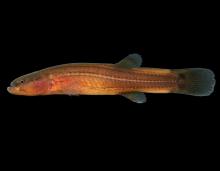
Species Types
Scientific Name
Forbesichthys agassizi
Description
The spring cavefish is the only cavefish in our state that has eyes, however small, and whose body is yellowish brown or brown; our other cavefishes lack eyes entirely and are pale and nearly colorless.
Media
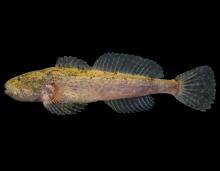
Species Types
Scientific Name
Cottus specus
Description
The grotto sculpin is a rare fish adapted cave conditions. It has recently been designated an endangered species under the Federal Endangered Species Act. It's found only in Perry County, Missouri.
Media

Species Types
Scientific Name
Ichthyomyzon fossor
Description
The northern brook lamprey is a great example of a nonparasitic lamprey. While lampreys as a group are famous for being fish parasites, brook lampreys are essentially bottom feeders.
Media

Species Types
Scientific Name
Ichthyomyzon castaneus
Description
The chestnut lamprey is an eel-like fish that many people find interesting because it's a vampire to other fish. Adults have a well-developed, rasplike oral disc, seven porelike gill openings, no paired fins, and a single nostril.
Media
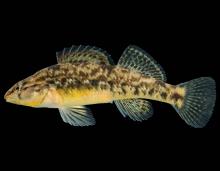
Species Types
Scientific Name
Etheostoma caeruleum
Description
The rainbow darter is a common and characteristic darter in the Ozarks. Where it occurs in our state, it is the most abundant darter in most streams of all sizes. Breeding males are brilliantly colored with reddish orange red and greenish blue.
Media
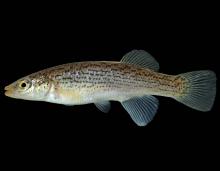
Species Types
Scientific Name
Fundulus catenatus
Description
The northern studfish is common and widely distributed in every principal Ozark stream system except the Neosho. Males in spawning coloration are some of our prettiest topminnows.
Media
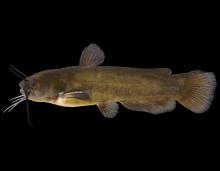
Species Types
Scientific Name
Ameiurus natalis
Description
The yellow bullhead is widespread in Missouri. It is the most common bullhead catfish in the Ozarks and Bootheel lowlands. It has white chin barbels, and the edge of its tail fin is straight, not notched.
Media
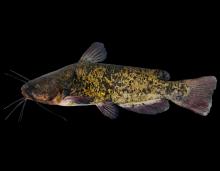
Species Types
Scientific Name
Ameiurus nebulosus
Description
In Missouri, the brown bullhead occurs in quiet, clear waters in wildlife refuges in southeast Missouri. Elsewhere in the state, it is stocked and possibly escapes. It has mottled sides and an elongated barbel at the corner of the mouth.
See Also


Media

Species Types
Scientific Name
Amphiuma tridactylum
Description
The three-toed amphiuma is an eel-like, completely aquatic salamander. It has very small forelimbs and hind limbs, each with three tiny toes. In Missouri it’s found only in the Bootheel region.
Media

Species Types
Scientific Name
Siren intermedia nettingi
Description
The western lesser siren is an eel-like, aquatic salamander with external gills, small eyes, small forelimbs with four toes, and no hind limbs. In Missouri, it’s found mostly in the Bootheel and northward in counties near the Mississippi River.
About Fishes in Missouri
Missouri has more than 200 kinds of fish, more than are found in most neighboring states. Fishes live in water, breathe with gills, and have fins instead of legs. Most are covered with scales. Most fish in Missouri “look” like fish and could never be confused with anything else. True, lampreys and eels have snakelike bodies — but they also have fins and smooth, slimy skin, which snakes do not.





















